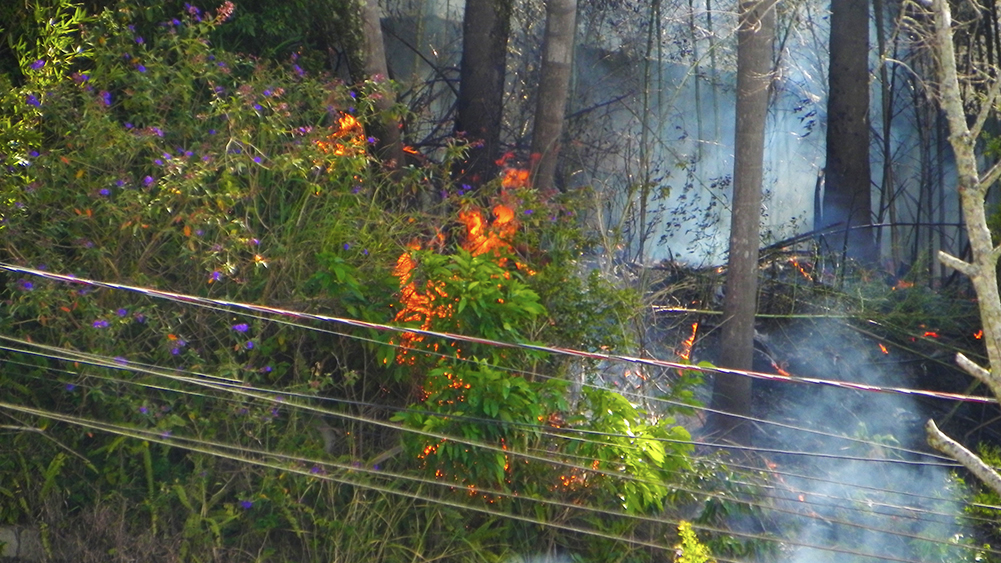
Imagine a tool that can discover problems on utility lines before outages, before power failures spark deadly wildfires, or before fears of wildfires prompt massive, pre-emptive power outages such as those suffered recently by millions of Californians.
Well, the tool exists. It is available today. And it works.
Engineers at Texas A&M University have developed the tool, a one-of-a-kind diagnostic software called Distribution Fault Anticipation (DFA).
It is a software that interprets variations in electrical currents on utility circuits caused by deteriorating conditions or equipment. It warns utility operators to respond to particular problems before they cause outages and possibly spark fires.
Electric power companies have nothing else like it.
DFA has been tested successfully by more than a dozen utilities in Texas and elsewhere over the past six years.
Now DFA is being tested by two of California’s biggest utilities, Pacific Gas & Electric (PG&E) and Southern California Edison (SCE), with encouragement from the California Public Utilities Commission (CPUC). The CPUC administered a 2018 state law requiring utilities to submit wildfire mitigation plans.
Texas A&M researchers also are preparing to test DFA at utilities In Australia and New Zealand.
DFA uses a sophisticated set of algorithms based on patterns discovered and refined through 15 years of research, research that involved monitoring in-service distribution lines at more than a dozen electrical utilities.
The technology was developed by a Texas A&M research team led by Dr. B. Don Russell, Distinguished Professor in the Department of Electrical and Computer Engineering, and Carl L. Benner, research professor in the department.
Research support for DFA was provided by the Electric Power Research Institute, the state of Texas and various electric utilities.
Russell and Benner likened DFA to the computer-based diagnostic tools found in modern cars, ones that warn when fluids are running dry or that an engine part is close to failure.
“Utility systems operate today like my 1950s Chevy,” Russell said. “They have some fuses and breakers and things, but they really don’t have anything diagnostic. They don’t have that computer under the hood telling them what’s about to go wrong.”
Electrical power outages are commonly caused by falling trees tearing down lines or failures of devices such as clamps, switches, conductors and connectors.
The devices often deteriorate over weeks or months, impacting electrical currents in small ways before an actual failure — perhaps triggered by high winds. DFA continuously monitors current sensors and applies its algorithms to detect and report abnormalities for investigation and repair.
Until now, utility companies have had little choice but to wait and react to failures. Electrical equipment is extremely durable and deterioration of devices is difficult or impossible to see. That makes visual inspection and preventive maintenance only marginally helpful.
Utilities have long recognized that something new is needed, especially given the nation’s aging infrastructure. DFA answers this need.
Texas A&M engineers developed DFA to help utility companies improve reliability in general, but they also saw its potential for preventing wildfires.
While Russell and Benner emphasize that DFA will not detect all utility failures, they say it is the only diagnostic tool available to analyze in real time miles of working circuits and identify explicitly what is failing.
Not only could the DFA technology prevent fires, it could give utility companies a tool to reduce the number and size of pre-emptive power outages, which now are based on dry conditions and weather forecasts.
“Power is being turned off with nothing known to be wrong with a given circuit,” Russell said. “Utilities need a crystal ball, something telling them which circuit is going to start a fire tomorrow because it is already unhealthy. We are kind of that crystal ball.”
Pacific Gas & Electric is now testing six DFA circuit monitoring devices; Southern California Edison is testing 60 DFA monitors. Both utilities are conducting the tests under two-year research contracts with Texas A&M.
Commercial installation for widespread use in California would cost far less than the billions of dollars in recent wildfire damage, or the billions in spending being discussed for other types of preventive measures.
For example, San Francisco based PG&E, the state’s largest utility, would need several thousand devices to cover all 106,681 miles of distribution circuit lines. A DFA device costs up to $15,000.
PG&E filed for bankruptcy this past January, citing potential liabilities of more than $30 billion stemming from wildfires. It estimates it will need another $75 billion or more to comply with a judge’s maintenance plan.
Widespread use of DFA could lower maintenance costs and prevent future tragedies.
“DFA is a new tool, allowing utilities to transform their operating procedures to find and fix problems before catastrophic failures," Russell said. “Utilities operators need real-time situational awareness of the health of their circuits…..DFA does that.”
This article originally appeared on The Texas A&M University System's news site.
